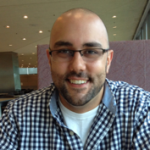
Field Notes from SAFe Thought Leaders
Hello Folks,
We’ve been busy at Scaled Agile, preparing for two SAFe Summits coming up this year and ongoing course development. But we wanted to take a moment to call out some impressive new thought leadership developed by members of the SAFe community.
 SAFe Fellow and SPCT Mark Richards posted a new blog, ‘Effective Feature Templates for SAFe.’ He notes that features are the key vehicle for value flow in SAFe, yet they are also the source of much confusion amongst those implementing it. People need a little more information about the feature and Mark has developed a Feature Template that focuses on essential components, with guidance on additional information that might be required.
SAFe Fellow and SPCT Mark Richards posted a new blog, ‘Effective Feature Templates for SAFe.’ He notes that features are the key vehicle for value flow in SAFe, yet they are also the source of much confusion amongst those implementing it. People need a little more information about the feature and Mark has developed a Feature Template that focuses on essential components, with guidance on additional information that might be required.
 SPC Silvio Wandfluh has a two-part blog series titled, ‘10 Essentials for a Distributed PI Planning.’ It’s a challenge, both operationally and communicatively, to conduct PI Planning simultaneously at multiple locations. In Part 1 of the series, Silvio discusses the usefulness of following a Lean-Agile Code of Conduct, connecting teams and trains with tools and channels, real-time synchronization, some pointers for the distributed PI Planning session itself, and the necessity of having a Single Source of Truth. In Part 2, he urges rigorous testing of digital channels before the event. At the same time, Silvio cautions against disrupting analog behavior (using notes, pens, and walls)just because you’re doing distributed planning. He also discusses the usefulness of queues, defining a Single Point of Contact (SPOC) in each location, and continuous improvement.
SPC Silvio Wandfluh has a two-part blog series titled, ‘10 Essentials for a Distributed PI Planning.’ It’s a challenge, both operationally and communicatively, to conduct PI Planning simultaneously at multiple locations. In Part 1 of the series, Silvio discusses the usefulness of following a Lean-Agile Code of Conduct, connecting teams and trains with tools and channels, real-time synchronization, some pointers for the distributed PI Planning session itself, and the necessity of having a Single Source of Truth. In Part 2, he urges rigorous testing of digital channels before the event. At the same time, Silvio cautions against disrupting analog behavior (using notes, pens, and walls)just because you’re doing distributed planning. He also discusses the usefulness of queues, defining a Single Point of Contact (SPOC) in each location, and continuous improvement.
 Dan Teixeira, an Agile Change Agent for Blue Agility, writes about, ‘5 Steps to Transforming your Transformation Approach: Applying SAFe Principles and Concepts to a Scaled Agile Framework Transformation.’ He notes that SAFe transformations are complex, have significant unknowns, and leaders typically expect results right away. On top of that, SAFe transformations often require a dramatic culture shift within the organization. In many ways, these challenges are similar to the challenges that drive organizations to want to adopt SAFe in the first place. So Dan lays out a game plan for solving these transformation challenges by leading the transformation with SAFe principles and values.
Dan Teixeira, an Agile Change Agent for Blue Agility, writes about, ‘5 Steps to Transforming your Transformation Approach: Applying SAFe Principles and Concepts to a Scaled Agile Framework Transformation.’ He notes that SAFe transformations are complex, have significant unknowns, and leaders typically expect results right away. On top of that, SAFe transformations often require a dramatic culture shift within the organization. In many ways, these challenges are similar to the challenges that drive organizations to want to adopt SAFe in the first place. So Dan lays out a game plan for solving these transformation challenges by leading the transformation with SAFe principles and values.
 Finally, we’re always interested in how SAFe can help in areas outside of traditional systems development. Cameron van Orman, SVP of Product Solution Marketing at CA Technologies, asks Can Agile Work for Marketing? He poses some essential questions for determining if it can, shares some of his learnings from trying to apply Agile for marketing at CA, and reveals some of the benefits achieved. (Spoiler alert; it can!)
Finally, we’re always interested in how SAFe can help in areas outside of traditional systems development. Cameron van Orman, SVP of Product Solution Marketing at CA Technologies, asks Can Agile Work for Marketing? He poses some essential questions for determining if it can, shares some of his learnings from trying to apply Agile for marketing at CA, and reveals some of the benefits achieved. (Spoiler alert; it can!)
I hope you enjoy these short blog posts and are impressed, as I am, by not only the quality of thought leadership but also the rich diversity of worthwhile topics.
Stay SAFe-
Dean





